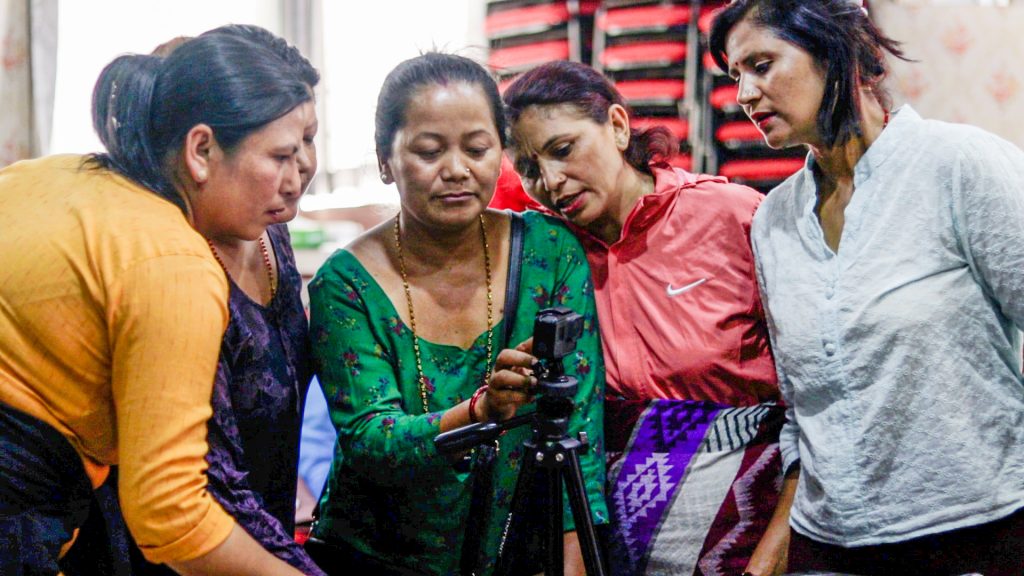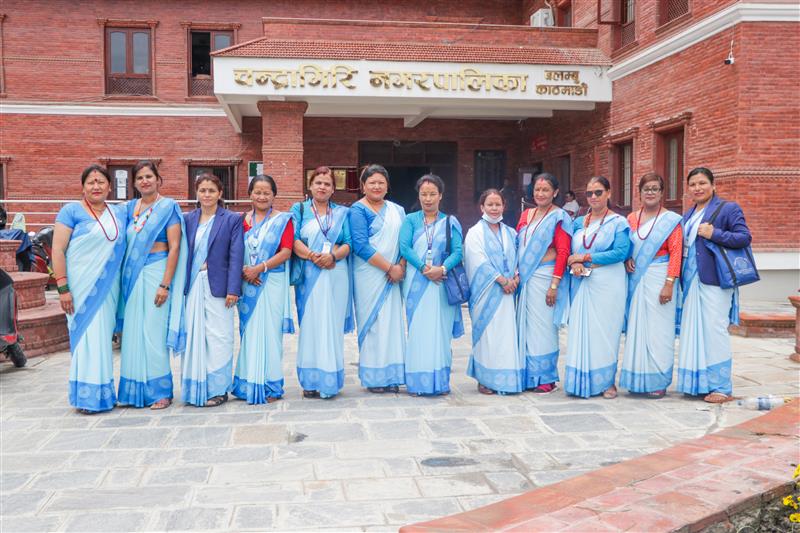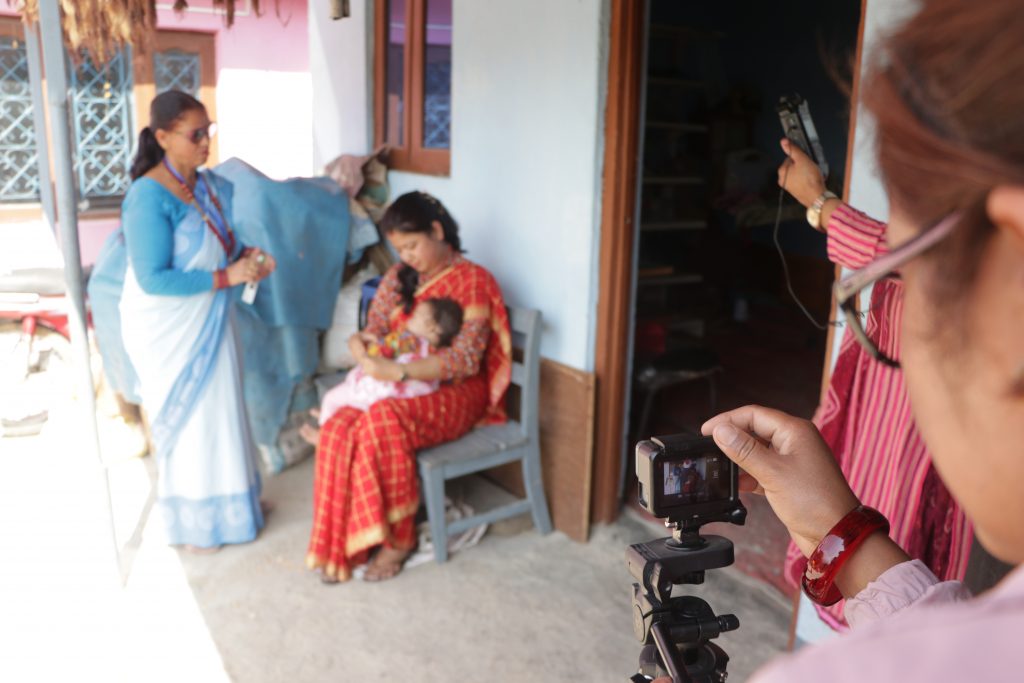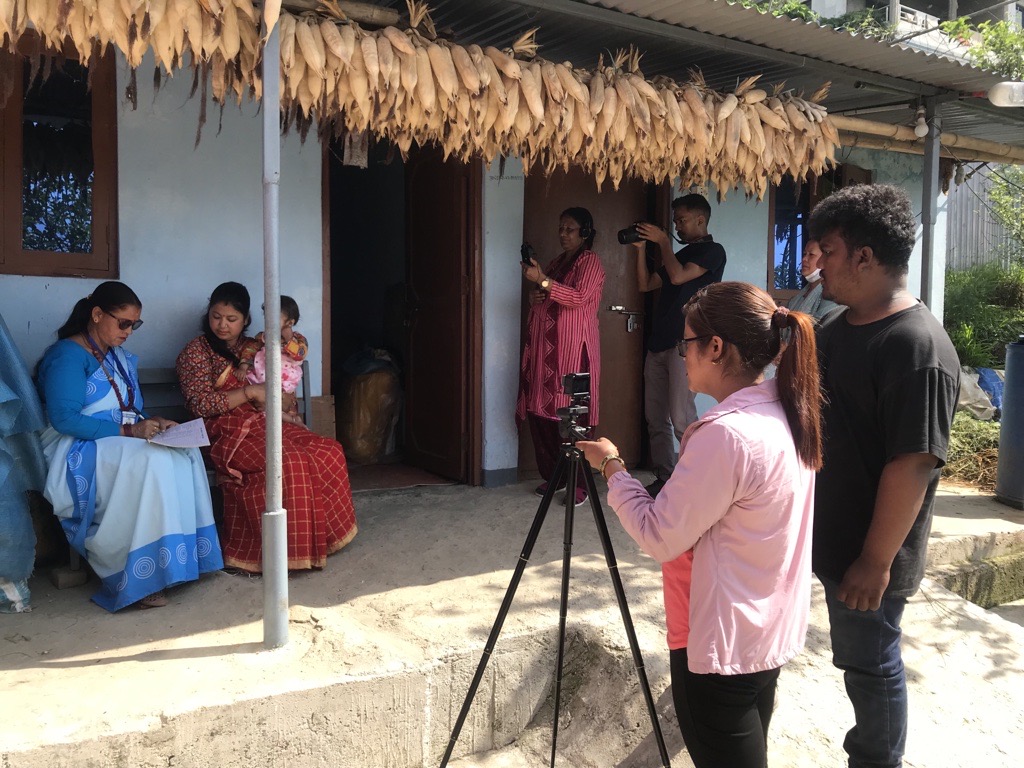Setting the scene
When we engaged in conversation with the Female Community Health Volunteers (FCHVs) in Chandragiri municipality in Kathmandu, they shared their narratives regarding their role within the community, maintaining work-life balance, and the challenges they encountered.
“Throughout my years of voluntary service, I have encountered numerous challenges. Besides providing services on the ground, I have multiple roles. I must manage my household chores, take care of children and engage in farming. At the same time, we strive to ensure that no child suffers from malnutrition, every child gets immunized, and all pregnant women receive proper counseling,” Sunmaya Tamang (pseudo name) shared her experience.

Sunmaya further voiced that convincing community people and increasing the acceptance of community-level healthcare initiatives is a challenging part of their work.
“Once, I took part in a national initiative to provide the public with medicines to treat lymphatic filariasis. Getting the people to accept the medicine and convince them was extremely difficult. I was in a challenging situation at the time,” she said.
She recalled similar expressions among the people. Some of the responses were:
“I’ll be dead after taking it.“
“These medications are expired.”
“Perhaps these medications are donations from abroad, it might be appropriate to administer to animals, they tried with humans here.”
As she spoke, other volunteers joined in and echoed similar reflections. Simultaneously, they also shared the importance of their work in contributing to the health and well-being of people despite the challenges they faced. This included their involvement in situations prone to shocks, such as natural disasters and pandemics.
Who are Female Community Health Volunteers?
The common Nepali name, “Mahila Swasthya Swayamsebika” means Female Community Health Volunteer (FCHV), is an inseparable part of the national health system. Around 51 thousand volunteers have spread throughout the country as the first contact point of service at the grass-root level. They are the pillars for connecting families, communities, and health workers with primary healthcare facilities by regularly visiting households, raising awareness about important health issues such as maternal and child health, family planning, nutrition, hygiene, immunization, and prevention of common diseases. Their contribution to improvements in health indicators, particularly the decline in maternal, neonatal, and child mortality, has been recognized by the Government of Nepal.

How are we engaged with these volunteers?
To address gender norms and power dynamics among community health providers through participatory action research as part of REBUILD for Resilience, the HERD International team, in partnership with the Chandragiri municipality, selected 12 FCHVs from 6 different wards. A series of workshops were organized, initially as a planning and coordination workshop followed by a session on problem identification and discussion on potential solutions. FCHVs prioritized the two issues ever faced, the lack of work recognition and their ad-hoc mobilization. Further workshops led FCHVs to emerge with the idea of community filming. The script was written and improved by FCHVs following an iterative participatory discussion approach. We developed a concrete plan for the community filming, formed three groups based on feasibility, and collectively chose the actors, camera persons, and sound recorders. All FCHVs were enthusiastic and hopeful that the video would be an excellent opportunity to showcase their contributions and change the perception of people towards them.

Although FCHVs agreed to produce the film as an effective means to portray their role, the filmmaking process required a certain level of dedication and work. The HERD International team provided technical support, but FCHVs led the entire filmmaking process. All FCHVs were heavily engaged in three consecutive days of community filming. The FCHVs received assistance from the community participants, who played a role in helping them complete this journey. It was their first-ever experience producing a film. They actively engaged themselves in teamwork though there were some difficulties. FCHVs experienced a range of emotions throughout the process – from laughter to frustration due to repeated shots and occasional moments of fear. However, despite these varying feelings, their overall experience was enjoyable.
Technic to technicalities: How did the volunteer feel?
Since filmmaking involves technic of scripting, storytelling, acting, and technicalities like handling the camera, participants said that holding the camera was ‘scary’ at the beginning which later turned into complete fun. Some volunteers were very conscious of the camera, and nervous while speaking the dialogue, and some faced the challenges of selecting the community participants to act and making them play the role as per the script. “I had never had the opportunity to be a cameraperson before, I felt that if I keep doing it, I can learn,” a volunteer who was involved in the shooting expressed.

Acting in front of the camera and in the presence of many people was a unique experience for the FCHVs. A volunteer who played the actor role said, “Being involved in such a program for the first time made me nervous. Initially, I was a bit hesitant but after making multiple attempts at dialogue, I realized there is no difference whether we speak on usual occasions or in front of the camera.” Another volunteer taking on the role of sound recordist felt that series of interactions, the group works in scripting, and technical support from the HERDi team (researchers and audiovisual) helped make the entire process of filmmaking process smooth which she enjoyed.

The FCHVs believed that the participatory film might change community perspectives, and they anticipated it would have a positive impact in the long-term run.
“Through the films, we have tried to show the role of female community health volunteers, our responsibilities at home, responsibilities outside, being always ready for the service even at night, at any time,” a volunteer who participated in the filmmaking said, “I hope it will lay certain impact in the community.”
Author’s note: The short film produced by female community health volunteers will be disseminated in the community.
(The views expressed in this article solely represent the opinions of the author and do not necessarily reflect the views of our partners and the funding agency associated with the project.)
Photos: Ranjit Bishra and Biraj Bhattarai/ HERD International












Comments (0)
No comments found.